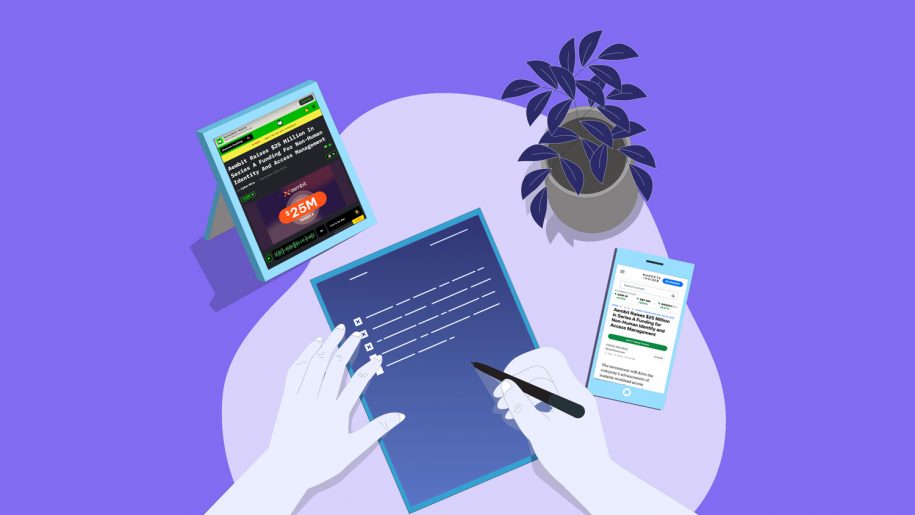Creating a professional and engaging cybersecurity press release is crucial for getting your story noticed by the media. Journalists review countless press releases daily, so it’s essential to make yours stand out. Check out our tutorial to learn how to write a cybersecurity press release that will solidify your brand and secure solid PR coverage.
There are two primary elements in writing a press release:
- Adhering to the correct format to ensure it is recognizable as a press release.
- Balancing professionalism with engaging content, avoiding overly promotional language, and crafting a story that readers will want to share.
Contents
How to Write a Cybersecurity Press Release – The Format
A quick online search will reveal various press release templates. They generally include the same basic sections.
Headline
Your press release should have a clear and concise headline that quickly communicates the topic to the reader. It should be no more than 110 characters.
Examples:
- “Internet Computer Protocol Launches Walletless Verified Credentials to Build Trust in the Public Discourse” for a product launch.
- “Deloitte Partners with Memcyco to Combat ATO and Online Attacks with Real-Time Digital Protection Solutions” for a partnership announcement.
- “Aembit Selected as Finalist for RSA Conference 2024 Innovation Sandbox Contest” for an event announcement.
Subheader
An optional section that expands on the headline. A subheading should be a single line that further explains your story. It can break up a longer headline or serve as an additional hook for the reader.
For example:
- Headline: “1inch partners with Blockaid to enhance Web3 security through the 1inch Shield” with a subheading “1inch and Blockaid unveil the 1inch Shield, providing comprehensive protection against scam tokens and enhancing Web3 security.”
- Headline: “Memcyco Report Reveals Only 6% Of Brands Can Protect Their Customers From Digital Impersonation Fraud” with a subheading “Memcyco’s report highlights the alarming prevalence of digital impersonation fraud and the insufficient protections most brands have in place”
Date and Place
Indicate the date of the announcement and the location of the announcement. For company announcements, this is typically the location of the company headquarters.

Opening Paragraph
Summarize the news story in one to three sentences. The reader should understand the main points of your press release from this paragraph alone. Each sentence should be able to stand alone as a summary of the news.

Body Text
Expand on the story, providing more details hinted at in the summary. Write with your audience in mind, ensuring the information is relevant and engaging enough to maintain their interest.

Quotes
Include quotes from relevant individuals to enrich the story and add a personal touch. The body text should remain objective, but quotes can express enthusiasm for the news.

Quotes should be 2-4 sentences long and clearly attributed to the speaker by name, job title, and company. They can be placed after the summary paragraph or before the end.
For announcements from multiple parties, such as partnerships, include quotes from representatives of each party to enhance the story’s credibility.
Boilerplate
The boilerplate is the “About” section, describing the company or entity making the announcement. It should be 1-2 paragraphs summarizing the company’s goals, mission, and any notable achievements.

Contact Information
Include contact details for a press contact who can provide more information about the story. This should include a name and email address, and optionally a phone number.
Style and Content Guide – Do’s and Don’ts
Do follow the “W questions” rule – who, what, where, when, why, and how. Put yourself in the reader’s shoes and answer the questions they would have.
Do write your story as if it were front-page news. Make important information easy to find.
Do maintain an objective, third-party tone. For example, use “XYZ company is launching a new cybersecurity solution…” instead of “We are launching a new cybersecurity solution…”
Do use active voice wherever possible.
Do include data or statistics to support your story. For example, mention the market value and growth rate of the sector you’re targeting. Use reliable sources like Statista or McKinsey.
Do keep your press release concise, ideally no longer than 700 words. This includes the title, summary, body text, and “about” section.
Do explain all acronyms and abbreviations, even if you think your audience will understand them.
Do proofread your press release to eliminate spelling, grammar, and punctuation errors. Have colleagues review it before distribution.
Do ensure all quotes are in quotation marks and attributed correctly.
Don’t turn your press release into a sales pitch. Journalists can spot this and may give your story less coverage.
Don’t use clickbait headlines that ask questions or promise to reveal something sensational.
Don’t use hype language or subjective superlatives. Avoid exclamation points and capitalizing entire words.
Don’t address the reader directly with terms like “you” or “we.”
Don’t overload your press release with outbound links. Use them sparingly, with no more than one link per 100-150 words. Excessive linking can result in your release being flagged for unnatural inbound links.
That’s How to Write a Cybersecurity Press Release
By following these guidelines, you can write cybersecurity press releases that captures attention and communicates your story effectively.

